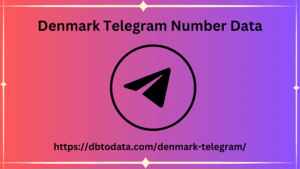Post by amirmukaddas on Mar 12, 2024 6:32:59 GMT
Any SEO project faces a specific or generic market segment. Each segment is taken into consideration by Google for the topics covered and the way in which they are treated. The most relevant websites in a certain segment are those that deal with the topics most often searched for by users in the ways judged most suitable, always by the users themselves. SEO vocabulary The first internet saw the flourishing of websites that carefully defined the FAQ and the glossary . The FAQs (frequently asked questions) are frequently asked questions on the subject covered or on the use of the website itself, while the glossary is a set of definitions useful for clarifying sometimes technical concepts found on the pages of the site. Vocabulary identification Each area has its own technical terms. What I suggest is not to enclose them all in a single-page glossary, but to develop them in your website as single pages.
A structured alternative to the canonical glossary is the creation of ad hoc web pages that deal with a single term, developing its ontology as much as possible . To identify the most common technical terms you can use SEO tools, but often Denmark Telegram Number Data the best thing is to do a good search on Google. For example, if you were editing a blog about tennis, you could search for "tennis game technical terms", getting the answer to this glossary page already chock-full of definitions. Once you have found the terms you can sculpt an editorial plan starting from each of them. Structured editorial plan On the page I linked before, there is the definition of Lungolinea : " shot played parallel to the sideline ". That's it, okay. The idea is to develop a page for each item, which, starting from the dry definition, amplifies and adequately circumscribes it.

If you start from Lungolinea , you could develop a page like " the best Lungolinea ever " where, in addition to specifying what a Lungolinea is, you can add photos and videos of the most epic plays ever featuring this particular shot. Some knowledge objects have entries on dbpedia, for these I suggest you structure the ontology by referring directly to the data you find on the site. Be very careful , because this will become the master page for the term Lungolinea and every time this term is used in your blog there will have to be a link to the page where you developed its meaning, only the first time it appears, not always. Be careful not to create bottlenecks , i.e. there should never be two or more well-developed pages on the same term, otherwise it will be more difficult for Google to understand which one to refer to and above all try to avoid the condition in which two anchor texts (it is the text of the link) the same ones point to different pages, because it can be equally destabilizing for the search engine.
A structured alternative to the canonical glossary is the creation of ad hoc web pages that deal with a single term, developing its ontology as much as possible . To identify the most common technical terms you can use SEO tools, but often Denmark Telegram Number Data the best thing is to do a good search on Google. For example, if you were editing a blog about tennis, you could search for "tennis game technical terms", getting the answer to this glossary page already chock-full of definitions. Once you have found the terms you can sculpt an editorial plan starting from each of them. Structured editorial plan On the page I linked before, there is the definition of Lungolinea : " shot played parallel to the sideline ". That's it, okay. The idea is to develop a page for each item, which, starting from the dry definition, amplifies and adequately circumscribes it.

If you start from Lungolinea , you could develop a page like " the best Lungolinea ever " where, in addition to specifying what a Lungolinea is, you can add photos and videos of the most epic plays ever featuring this particular shot. Some knowledge objects have entries on dbpedia, for these I suggest you structure the ontology by referring directly to the data you find on the site. Be very careful , because this will become the master page for the term Lungolinea and every time this term is used in your blog there will have to be a link to the page where you developed its meaning, only the first time it appears, not always. Be careful not to create bottlenecks , i.e. there should never be two or more well-developed pages on the same term, otherwise it will be more difficult for Google to understand which one to refer to and above all try to avoid the condition in which two anchor texts (it is the text of the link) the same ones point to different pages, because it can be equally destabilizing for the search engine.
